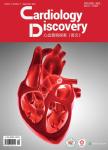Rationale and Design of a Randomized Controlled Trial of Bivalirudin with a Prolonged High-Dose Infusion Versus Heparin Monotherapy During Primary Percutaneous Coronary Intervention in Patients with Acute ST-Segment Elevation Myocardial Infarction:The BRIGHT-4 Trial
Rationale and Design of a Randomized Controlled Trial of Bivalirudin with a Prolonged High-Dose Infusion Versus Heparin Monotherapy During Primary Percutaneous Coronary Intervention in Patients with Acute ST-Segment Elevation Myocardial Infarction: The BRIGHT-4 Trial作者机构:Cardiovascular Research Institute and Department of CardiologyGeneral Hospital of Northern Theater CommandShenyang 110016China Zena and Michael A.Wiener Cardiovascular InstituteIcahn School of Medicine at Mount SinaiNew YorkNew York 10029-5674USA
出 版 物:《Cardiology Discovery》 (心血管病探索(英文))
年 卷 期:2022年第2卷第4期
页 面:226-230页
基 金:supported by the Chinese Society of Cardiology’s Foundation.
主 题:Heparin Bivalirudin ST-segment elevation myocardial infarction Primary percutaneous coronary intervention
摘 要:Intravenous anticoagulant therapy is critical to prevent ischemic events without increasing the risk of bleeding in patients with ST-segment elevation myocardial infarction(STEMI)undergoing primary percutaneous coronary intervention(PPCI).Heparin and bivalirudin are the most commonly used adjunctive anticoagulant agents during PPCI.However,the superiority of the 2 most optimal regimens with these agents in patients undergoing PPCI remains controversial.The BivaliRudin with prolonged high-dose Infusion durinG PPCI versus Heparin Trial 4(BRIGHT-4)is a large-scale,prospective,multicenter,active-control,parallel-group,open-label,randomized trial designed to test whether bivalirudin with a post-PCI high-dose infusion is superior to heparin monotherapy in STEMI patients undergoing PPCI.A total of 6000 patients will be enrolled and randomly assigned to receive bivalirudin or heparin in a 1:1 ratio.Patients allocated to the bivalirudin group will be treated with a high-dose bivalirudin infusion(1.75 mg/(kg·h))after PCI for 2 to 4 hours.In the heparin group,the use of glycoprotein IIb/IIIa inhibitors will be reserved for the development of procedural thrombotic complications.The efficacy and safety of bivalirudin will be evaluated at 30 days,6 months,and 12 months after the randomization.The primary endpoint is a composite of all-cause death or Bleeding Academic Research Consortium(BARC)types 3 to 5 bleeding at 30 days after randomization.The BRIGHT-4 study protocol has received approval from the ethics committee of General Hospital of Northern Theater Command(Shenyang,China).The procedures set out in this protocol are in accordance with the principles of the Declaration of Helsinki and Good Clinical Practice guidelines.The results will be published following the Consolidated Standards of Reporting Trials statement in a peer-reviewed scientific journal(Trial registration number:NCT03822975).



